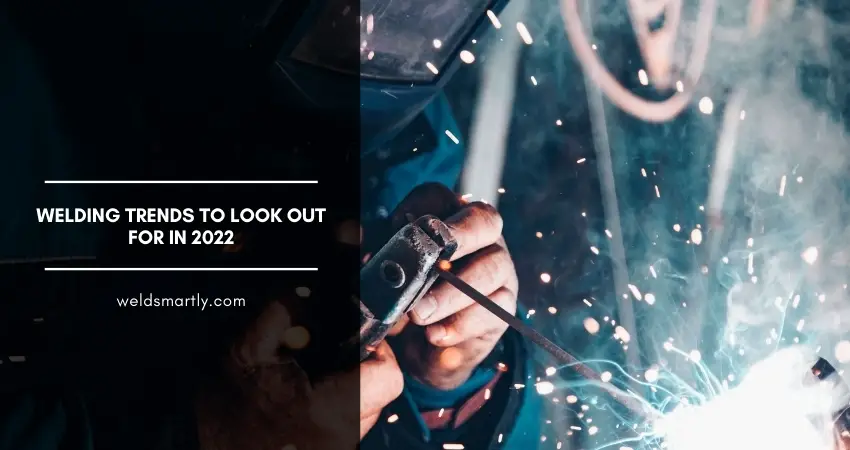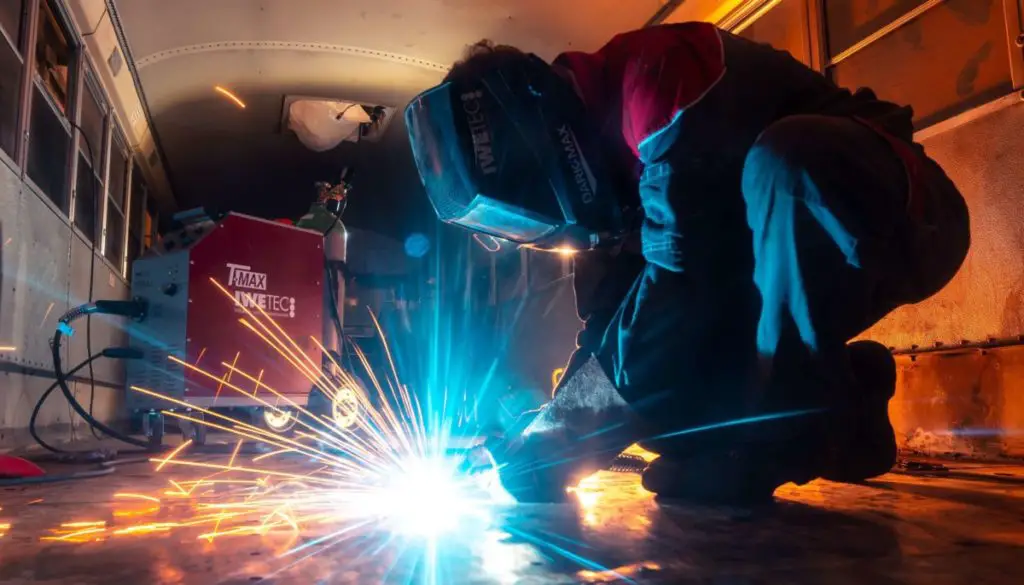Increasingly, we’re seeing a shift away from emphasizing university and higher education, with apprenticeships now taking center stage and the number of participants in this type of scheme rising for the first time in three years in 2019.
This type of initiative teaches core practical skills to applications, with welding offering a relevant case in point. This can provide a pathway to a rewarding and reliable career.
But what are the top welding trends to look out for in 2022? Here’s our shortlist of the top three!

#1. The Rise and Rise of Augmented Reality Training
Augmented reality (AR) represents big business across the globe, with this industry worth an estimated $17.67 billion in 2020.
What’s more, it’s expected to expand at a compound annual growth rate (CAGR) of 43.8% between 2021 and 2028, as AR continues to find a niche in various markets and applications.
For example, AR training has been deployed within a wide range of practical industries, while enabling teachers to impart critical skills in a real-world, but ultimately safe, learning environment.
Make no mistake; AR training in welding has proved particularly effective in recent times, leading to various improvements in the efficiency, efficacy and safety in training settings nationwide.
For example; AR programs are thought to deliver a 34% increase in the number of certified welders, according to Soldamatic, when compared with traditional methodology, which struggles to impart practical skills to youngsters or apprentices.
What’s more, AR training slashes lab costs and the environmental impact of training programs by a whopping 68%, making courses more affordable to deliver and far more accessible across the board.
From an efficiency perspective, AR training programs drive a 56% reduction in learning time, enabling companies to impart skills much quicker without compromising on the quality of education provided.
Finally, statistics suggest that utilizing AR training as opposed to traditional methods for welders results in 84% fewer accidents, which is absolutely imperative in scenarios where heavy or powerful equipment is used.
#2. Automation as a Key Driver of Productivity
On a similar note, the use of automation within the practical welding process is set to become increasingly commonplace in 2022.
The popularity of automation is being driven by advancements in technology and the falling cost of innovation, while this concept is now being embraced by factories to afford them a competitive advantage over their rivals.
At the heart of this trend is the use of robots in various welding processes, with this underpinning a host of new technologies and innovations within the space.
According to Technavio analysts, for example, one key factor contributing to the growth of the global welding equipment market is the emergence of friction stir welding technology.
This is an automated process in which two metals are joined using frictional heat, along with a precisely controlled forging pressure.

The technology prevents mechanical distortion as the whole process is conducted at a low operating temperature, resulting in a finished product that boasts high integrity and is completely free from defects.
There’s no doubt that automated friction stir welding technology is gaining traction in a number of marketplaces, particularly in the automotive space where there’s a high emphasis on quick and high volume manufacturing processes.
There are other automated processes taking hold in the discipline of welding too, so this will definitely be an interesting space to watch through 2022.
#3. A Continued Emphasis on Welding Safety
We’ve already touched on the safety improvements that have arisen from AR training systems, and there’s no doubt that this is part of a wider trend within the welding industry.
Certainly, investments in welding safety are more important than ever before, with rising concerns over welders’ occupation safety and the exposure to harmful fumes having mounted over the course of the last year or so.
Because of this, 2022 is likely to see the initiation of further legislation actions and directives to help safeguard the safety of welders, particularly in regions such as the EU.
After all, single bloc states have already enforced comprehensive legislation based on Directive (EU) 2017/2398 amending Directive (2004/37/EC), which places the onus on manufacturers to proactively reduce health and safety risks through the creation of specific products.
At the same time, this directive encourages manufacturers to proactively prevent diseases and illnesses associated with the welding process, while providing the best possible ergonomics without compromising on efficiency or productivity.
Next year will most likely see a particularly strong focus afforded to the potential harm caused by welding fumes, which initial studies have suggested can trigger a number of occupational lung diseases over a prolonged period of exposure.
Of course, such health risks can be partially negated through various means, from the use of tailored respiratory protective equipment (RPE) to the installation of localised exhaust ventilation that helps to maintain clean air in factories.
We should expect to see such measures rolled out on a much larger scale in 2022, in a bid to better protect individual welders and other workers who operate in a confined manufacturing space.
Interestingly, it’s thought that the introduction of such measures and new technology could ultimately create new work and a plethora of additional jobs, while manufacturers will also be compelled to take the initiative when developing safe, accessible and completely modern workspaces for their employees.
The Last Word
So there you have it; our brief guide to the leading trends that are likely to impact the welding industry through 2022!
Of course, there are many other developments and trends to keep your eyes peeled for next year and beyond, but those listed above are likely to be the most impactful from the perspective of efficiency, productivity and long-term cost reduction.
